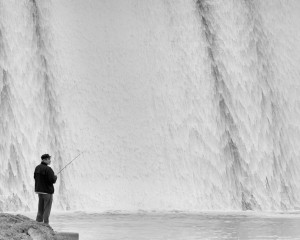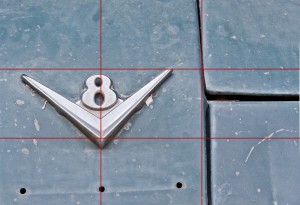Composition
When learning photography, it’s common to focus on technical subjects — learning camera controls, understanding exposure, learning to keep photos in focus, and so on. Maybe this is because these topics are the first things we see when we open the user manuals for our new cameras (you did read the user manual, didn’t you?), or maybe it’s just because these are well-bounded subjects that we’re able to master, given a little study and practice, but none of these skills really address why we’re making photographs in the first place.
Indeed, most of us will continue learning technical skills as long as we keep working in photography, but once we’re able to effectively control our cameras and understand exposure, the most important aspect of our artistic growth comes from understanding what we intend to show in our work. It’s not uncommon for people to chalk this up to sheer dumb luck (“she has an eye for photography”), but I don’t believe this is right at all. Certainly, there are people who are more naturally fluent in the skills of photography, just as there are people who are naturally gifted musicians or athletes, but I firmly believe that anybody at all can become quite good at photography given the persistence and effort you’d expect to spend to learn any complex craft.
One of these fundamental photography skills is composition, which is the technique we use when we decide what we’re going to show in a photo, and how it’s going to be presented. If you approach a photo as you would a painting, composition is how you decide what’s going to be in the painting, and where it’s going to appear. A while back, I started a series of posts on basic compositional techniques. I’ve collected them here to help guide you through these topics, and I’ll add future posts as I publish them.[clear][spacer]
 Subject
Subject
This should be automatic, but it rarely works out that way. Put simply, if you can’t figure out what the subject in your photo is supposed to be, you’re lost from the start, and no amount of technical prowess will save you. Look no further than 99% of all sunset pictures ever taken to see that the impact of a weak subject is fleeting, at best. Spend time mastering this, and it’ll go a long way toward improving your work.[clear][spacer]
 The Rule of Thirds
The Rule of Thirds
Now that you know the subject of your photo, the Rule of Thirds helps present it in a pleasant fashion. We’re hard-wired to put our subject right on the bullseye in our viewfinders, but think twice about this — if for no other reason than because everybody else everywhere is doing this, too. This post has some examples and discussion about the rule of thirds as well as the Fibonacci or golden spiral, which is a related tool to help you think about the balance of your photo a little differently.[clear][spacer]

Leave a Reply